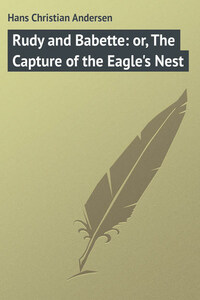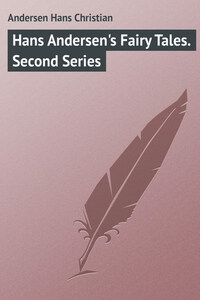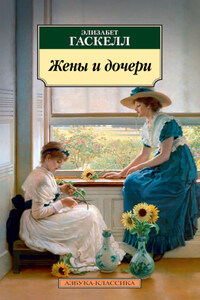The Hans Andersen Fairy Tales will be read in schools and homes as long as there are children who love to read. As a story-teller for children the author has no rival in power to enlist the imagination and carry it along natural, healthful lines. The power of his tales to charm and elevate runs like a living thread through whatever he writes. In the two books in which they are here presented they have met the tests and held an undiminishing popularity among the best children's books. They are recognized as standards, and as juvenile writings come to be more carefully standardized, their place in permanent literature will grow wider and more secure. A few children's authors will be ranked among the Immortals, and Hans Andersen is one of them.
Denmark and Finland supplied the natural background for the quaint fancies and growing genius of their gifted son, who was story-teller, playwright, and poet in one. Love of nature, love of country, fellow-feeling with life in everything, and a wonderful gift for investing everything with life wrought together to produce in him a character whose spell is in all his writings. "The Story of My Life" is perhaps the most thrilling of all of them. Recognized in courts of kings and castles of nobles, he recited his little stories with the same simplicity by which he had made them familiar in cottages of the peasantry, and endeared himself alike to all who listened. These attributes, while they do not account for his genius, help us to unravel the charm of it. The simplest of the stories meet Ruskin's requirement for a child's story – they are sweet and sad.
From most writers who have contributed largely to children's literature only a few selected gems are likely to gain permanence. With Andersen the case is different. While there are such gems, the greater value lies in taking these stories as a type of literature and living in it a while, through the power of cumulative reading. It is not too much to say that there is a temper and spirit in Andersen which is all his own – a simple philosophy which continuous reading is sure to impart. For this reason these are good books for a child to own; an occasional re-reading will inspire in him a healthy, normal taste in reading. Many of the stories are of value to read to very young children. They guide an exuberant imagination along natural channels.
The text of the present edition is a reprint of an earlier one which was based upon a sentence-by-sentence comparison of the four or five translations current in Europe and America. It has been widely commended as enjoyable reading, while faithful to the letter and spirit of the Danish original. A slight abridgment has been made in two of the longer stories. The order of the selections adapts the reading to the growing child – the First Series should be sufficiently easy for children of about eight or nine years old.
FAR away in the forest, where the warm sun and the fresh air made a sweet resting place, grew a pretty little fir tree. The situation was all that could be desired; and yet the tree was not happy, it wished so much to be like its tall companions, the pines and firs which grew around it.
The sun shone, and the soft air fluttered its leaves, and the little peasant children passed by, prattling merrily; but the fir tree did not heed them.
Sometimes the children would bring a large basket of raspberries or strawberries, wreathed on straws, and seat themselves near the fir tree, and say, "Is it not a pretty little tree?" which made it feel even more unhappy than before.
And yet all this while the tree grew a notch or joint taller every year, for by the number of joints in the stem of a fir tree we can discover its age.
Still, as it grew, it complained: "Oh! how I wish I were as tall as the other trees; then I would spread out my branches on every side, and my crown would overlook the wide world around. I should have the birds building their nests on my boughs, and when the wind blew, I should bow with stately dignity, like my tall companions."
So discontented was the tree, that it took no pleasure in the warm sunshine, the birds, or the rosy clouds that floated over it morning and evening.
Sometimes in winter, when the snow lay white and glittering on the ground, there was a little hare that would come springing along, and jump right over the little tree's head; then how mortified it would feel.
Two winters passed; and when the third arrived, the tree had grown so tall that the hare was obliged to run round it. Yet it remained unsatisfied and would exclaim: "Oh! to grow, to grow; if I could but keep on growing tall and old! There is nothing else worth caring for in the world."
In the autumn the woodcutters came, as usual, and cut down several of the tallest trees; and the young fir, which was now grown to a good, full height, shuddered as the noble trees fell to the earth with a crash.
After the branches were lopped off, the trunks looked so slender and bare that they could scarcely be recognized. Then they were placed, one upon another, upon wagons and drawn by horses out of the forest. Where could they be going? What would become of them? The young fir tree wished very much to know.













